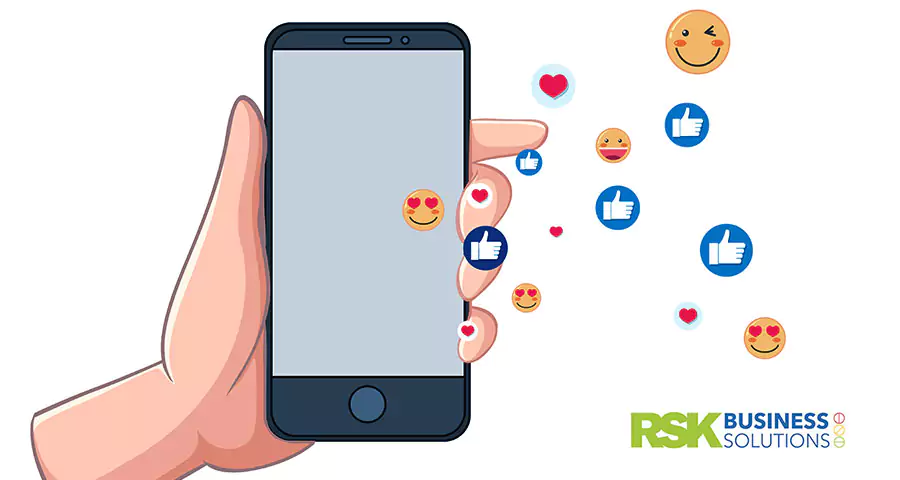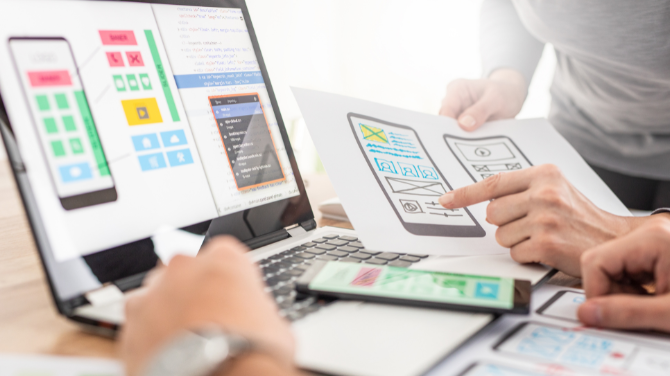
Apple aficionados the world over are rejoicing – the latest iPhone 7 and iPhone 7 Plus is finally here. Although the new iPhone 7 looks a lot like its predecessor, the absence of the headphone jack and the home button has set the mobile industry buzzing!
Related Articles

IT Outsourcing
RSK BSL Tech Team
May 4, 2025
|
|

Mobile Application Development
RSK BSL Tech Team
April 30, 2025
|
|

Software Development
RSK BSL Tech Team
April 27, 2025
|
|

Hire resources
RSK BSL Tech Team
April 24, 2025
|
|

Software Development
Praveen Joshi
April 20, 2025
|
|

Artificial Intelligence
Praveen Joshi
April 17, 2025
|
|

Pen Testing
Praveen Joshi
April 15, 2025
|
|

AI Tech Solutions
RSK BSL Tech Team
April 14, 2025
|
|

Software Development
RSK BSL Tech Team
April 9, 2025
|
|

Pen Testing
RSK BSL Tech Team
April 7, 2025
|
|

Software Development
RSK BSL Tech Team
April 3, 2025
|
|

Cloud Application
RSK BSL Tech Team
March 31, 2025
|
|

Pen Testing
Praveen Joshi
March 27, 2025
|
|

Software Development
RSK BSL Tech Team
March 25, 2025
|
|

Software Development
RSK BSL Tech Team
March 20, 2025
|
|

Software Development
RSK BSL Tech Team
March 18, 2025
|
The New iPhone 7 Differences
Apple aficionados the world over are rejoicing – the latest iPhone 7 and iPhone 7 Plus is finally here. Although the new iPhone 7 looks a lot like its predecessor, the absence of the headphone jack and the home button has set the mobile industry buzzing!
Upgraded Features of the iPhone 7
The latest iPhone is faster, slicker looking, and has a longer lasting battery life, than its predecessor. With the latest version, the iPhone is finally water-resistant. The upgraded camera allows you to take better photos, especially in low light. But perhaps the biggest change introduced by Apple in the new iPhone is the removal of the headphone jack and the home key button.
If you are wondering whether it’s worth switching from an existing iPhone 6s or iPhone 6s Plus, here is a brief look at the features of the new iPhone 7.
Design – iPhone 7 is available in sleek black and jet black colours. Although it looks extremely attractive, the black surface is more prone to fingerprints. The iPhone 7 is marginally lighter than the iPhone 6 and iPhone 6s Plus.
No Home Button and No Headphone – If you do upgrade, the new home screen feature will take some getting used to. The traditional click- based home screen button has been replaced by a touch-sensitive surface based on 3D technology. Also, the 3.5mm audio jack on the bottom left audio jack in the iPhone 6 has been removed. You won’t miss this feature if you are already using Bluetooth headphones. As a substitute, the new phone packaging includes wired Apple EarPods.
Waterproof – This much-awaited change is finally here, which means that your phone is now safe from accidental water spills and toilet drops. However, waterproof does not mean that you could dip the phone in the ocean, and the phone would still work. So be careful.
Faster processor and better battery life – The new phone has the faster Apple’s A10 Fusion chip, which makes the iPhone 7 at least 40% faster than iPhones based on the A9 processor. The iPhone 7 is expected to give 2 hours more battery life and 7 Plus will give one hour longer charge time than the iPhone 6s Plus.
Screen resolution and Image Quality – The screen resolution of the iPhone 7 is the same as iPhone 6, but the newer model offers brighter images, broader colour spectrum, and larger pixel size and post-processing. What this means for the end user is improved images even in low-light. Also, you no longer have to worry about blurred images due to shaky hands.
There’s good news for ardent FaceTime users. The front camera has been upgraded to 7 megapixels compared to the 5 megapixels on iPhone 6. Video recording in the new phone is at 1080p, instead of 720p in the iPhone6.
More Storage – The storage capacity has been doubled in the iPhone 7 models. The three storage options are 32 GB, 128 GB and 256 GB. For businesses promoting BYOD culture, this is both a good and a bad thing. Employees will now be able to store more of their work files on the mobile device, but it also means that more of the business content is at risk of misuse. Companies will need to pay closer attention to their mobile device management.
Switch to the new iPhone 7 if you want a superior gaming experience, or if you love using your iPhone to take photos and make videos. The new model allows for faster processing, better app viewing quality, makes it easier to store more in-app downloads, and use the app for longer without the need to charge the phone.
For mobile app developers, the new touch -sensitive haptic surface (in place of the mechanical home button) will allow apps to send users notifications through different vibrations.
From the point of view of native mobile app development, the iPhone is the preferred platform for app monetization. That’s because, even though Android has more app downloads, iPhone customers tend to be in the higher income group and therefore are more willing to pay for an app than any other smartphone customer group. This combined with the fact that it takes lesser time to develop an iPhone app than it does to code an Android app, makes iOS app development the preferred choice. In fact, most popular apps are first launched on iPhone before the Android version is released.
For more information on Android, iOS app development, Hyrbid app development, or Cross-platform for a free consult on mobile application development services for start-ups please fill our contact form and we will be in touch.
Praveen Joshi
Praveen is a seasoned IT Solutions Leader and Director at RSK Business Solutions, a technology-driven IT Consulting Company that specializes in Bespoke Software Development, Agile Consulting, Mobile App Development, Smart Sourcing, and much more. For the last 17 years, he has been delivering quality custom IT solutions that help businesses achieve their goals.

 Share
Share Post
Post Tweet
Tweet Copy
Copy


